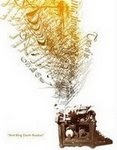This is useful information and since I haven't posted a tip in a few days, I thought I would go ahead and use this highly informative, though long, post. (After you read it you can see if I have used commas correctly.)
SEVEN FUNDAMENTAL COMMA RULES
The comma "rule" that many of us learned-to place a comma anywhere we think a reader should pause-often results in muddled, nearly incoherent sentences like the following:
When Susan was a child, she wanted to be an astronaut, or a doctor, or a banker, but when she graduated from high school, she decided, that she would like to become an artist, and live in a big, exciting, fun city.
This "rule" is, of course, not a rule at all, and following it made the sentence above very difficult to read. Are all nine commas really necessary? Let's check the seven fundamental comma rules.
Comma Rule 1: Use a comma before coordinating conjunctions that join independent clauses.
Coordinating conjunctions: and, but, for, nor, or, so, yet
Independent clause: a word group that contains at least one subject, at least one verb, and expresses a complete thought; also called a sentence.
Example: Tom enjoys writing poetry, and he has submitted several poems to regional literary magazines.
Comma Rule 2: Use commas to separate items in a series.
Example: She bought bread, milk, cookies, and juice.
Example: Of the three children, Becky is the oldest, James is the youngest, and Jack is the middle child.
Comma Rule 3: Use a comma after introductory words, phrases, and clauses.
Example: Quietly, she tiptoed past the sleeping child. (introductory word)
Example: Running quickly, Marjorie arrived at the bus stop before the bus pulled away. (introductory phrase)
Example: After he finished his homework, Brian read The Great Gatsby. (introductory clause)
Comma Rule 4: Use commas to set off nonrestrictive phrases or clauses from the rest of the sentence.
Nonrestrictive phrase or clause: a phrase or clause that adds nonessential information to the sentence. In other words, if the phrase or clause was removed from the sentence, the sentence would still retain its original meaning.
Example: Several politicians, lawyers, and business leaders attended the conference, which began at 2 p.m. (nonrestrictive clause)
Comma Rule 5: Use a comma between adjectives that modify the same noun.
Hint: If you can put and or but between the adjectives, a comma will probably belong there.
Example: Edgar is a tall, distinguished businessman. (Since we could write tall and distinguished, the comma is necessary.)
Example: When I was in college, I lived in a small brown house next to a filling station. (Since we are not likely to say that we lived in a small and brown house, no comma is necessary between these adjectives.)
Comma Rule 6: Use a comma to separate a direct address from the rest of the sentence.
Example: Becky, please go to the store and buy some milk.
Example: If we don't go soon, Barney, it will be too late.
Comma Rule 7: In direct quotes, use a comma (or commas) to separate the speaker from the quote.
Example: The teacher said, "Please pass your essays to the front of the room."
Example: "I want to go to grandma's house," the child said.
Example: "Drive to the mall," Mother said, "and buy a new sleeping bag for your camping trip."
Comma placement is not difficult if we follow these basic rules. So let's take another look at the first example: How many of the nine commas are necessary? If you said five, you're correct. Here's the sentence as it should be punctuated:
When Susan was a child, she wanted to be an astronaut or a doctor or a banker, but when she graduated from high school, she decided that she would like to become an artist and live in a big, exciting, fun city.
The first comma in the sentence follows rule 3: Use a comma after introductory words, phrases, and clauses.
The second comma follows rule 1: Use a comma before coordinating conjunctions that join independent clauses.
The third comma follows rule 3: Use a comma after introductory words, phrases, and clauses.
The fourth and fifth commas follow rule 5: Use a comma between adjectives that modify the same noun.
Comma placement can be tricky, but if we follow the fundamental rules, it can-and will-become second nature.
Happy Writing!







































No comments:
Post a Comment